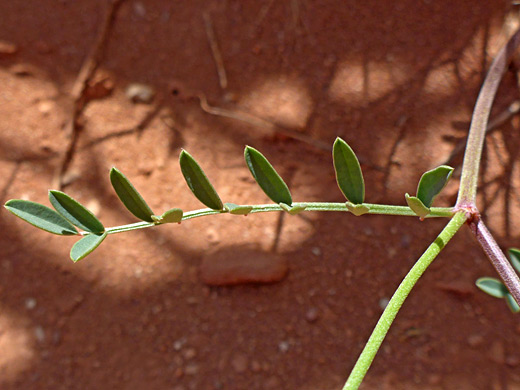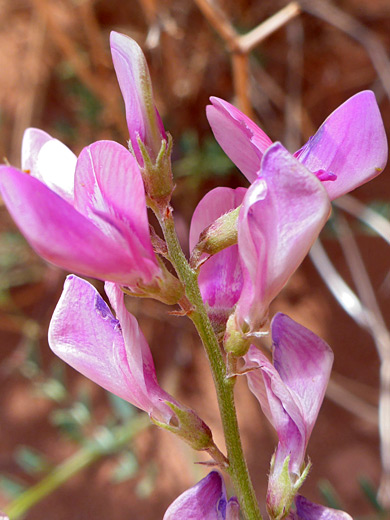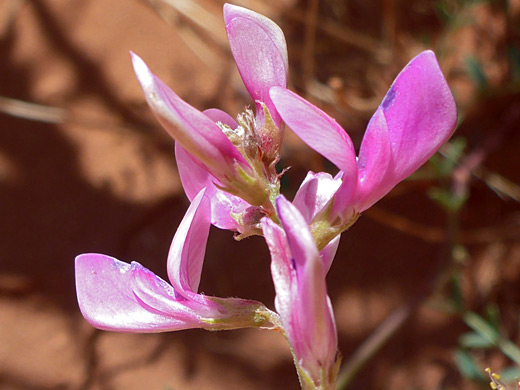Common names:
Utah sweetvetch, northern sweetvetch, northern chainpod
Family:
Scientific name:
Hedysarum boreale
Main flower color:
Range:
The Rocky Mountain states, and neighboring areas
Height:
Up to 2 feet
Habitat:
Generally open, dry locations; slopes, canyons, woodland margins, from 6,000 to 9,500 feet
Leaves:
Alternate, up to 4 inches long, pinnately divided into between 7 and 16 narrow leaflets, elliptic to obovate, up to 0.8 inches
Season:
May to July
Leaves of hedysarum boreale are divided into up to seven well-separated pairs of narrow leaflets, plus a terminal leaflet, all of which are usually glabrous above, strigose below, and have a tiny spike at the apex. Pairs are not quite opposite, instead somewhat alternate. Leaf stalks are grooved, and also strigose. Leaves have stipules at the base. Stems are upright or at an angle, generally unbranched.
The inflorescence is an open, elongated cluster of around a dozen heads. Flowers are attached by short, strigose stalks, and they have a single bract at the base, at most a quarter of an inch long. Calyces are divided below the middle into five narrow lobes, of slightly unequal lengths. Corollas are pale pink, sometimes yellowish, withering to blue/purple. The keel petal is much larger than the two wing petals. Fruits are flat, rounded, hairless pods, in pendent chains of two to five.
The inflorescence is an open, elongated cluster of around a dozen heads. Flowers are attached by short, strigose stalks, and they have a single bract at the base, at most a quarter of an inch long. Calyces are divided below the middle into five narrow lobes, of slightly unequal lengths. Corollas are pale pink, sometimes yellowish, withering to blue/purple. The keel petal is much larger than the two wing petals. Fruits are flat, rounded, hairless pods, in pendent chains of two to five.
All Contents © Copyright The American Southwest | Comments and Questions | Contribute | Site Map




